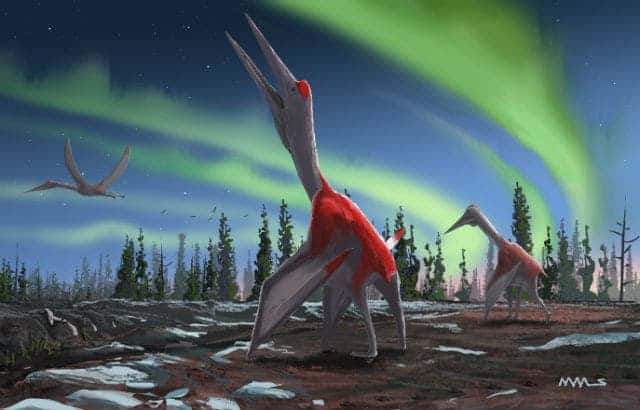Researchers at the Queen Mary University of London report on one of the largest flying creatures we’ve ever seen: a previously misclassified species of pterosaur.

Image credits David Maas.
While fossils of the species were discovered 30 years ago in Alberta, Canada, paleontologists assumed they belonged to an already-known species of pterosaur, Quetzalcoatlus, which was first discovered in Texas, USA.
Closer analysis of the fossils, however, points to a new species altogether, a pterosaur from the Azhdarchid group that the team christened Cryodrakon boreas.
Big bird
“This is a cool discovery, we knew this animal was here but now we can show it is different to other azhdarchids and so it gets a name,” says Dr. David Hone, lead author of the study from Queen Mary University of London.
Boasting a wingspan of up to 10 meters (roughly 33 feet), ‘small’ isn’t a word that can quite describe the new species. The authors argue, based on the fossils, that we’re looking at a previously-unknown species which lived during the Cretaceous period around 77 million years ago.
The fossils in question consist of a skeleton with part of its wings, legs, neck, and a rib still intact. The skeleton comes from a juvenile specimen (with a wingspan of about 5 meters, but one larger neck bone found at the site suggests an adult would have grown to a wingspan of around 10 meters. This makes C. boreas comparable in size to other giant flying dinos such as Quetzalcoatlus. The larger one could grow to a wingspan of 10.5 meters and a bulk of 250 kgs — so it’s likely C. boreas could reach just a bit under that weight.
Like other azhdarchids, the new species was carnivorous and primarily hunted small animals such as lizards, early mammals, and possibly juvenile dinosaurs.
“It is great that we can identify Cryodrakon as being distinct to Quetzalcoatlus as it means we have a better picture of the diversity and evolution of predatory pterosaurs in North America,” Dr. Hone adds.
Azhdarchid fossils have been found in terrestrial settings suggesting that, despite likely being able to cross an ocean in flight, they were adapted for and lived in inland environments. Despite their large size and a distribution across North and South America, Asia, Africa, and Europe, most azhdarchids are known from fragmentary remains. This makes Cryodrakon an important animal since it has very well preserved bones and includes multiple individuals of different sizes.
The paper “Cryodrakon boreas, gen. et sp. nov., a Late Cretaceous Canadian azhdarchid pterosaur” has been published in the Journal of Vertebrate Paleontology.



